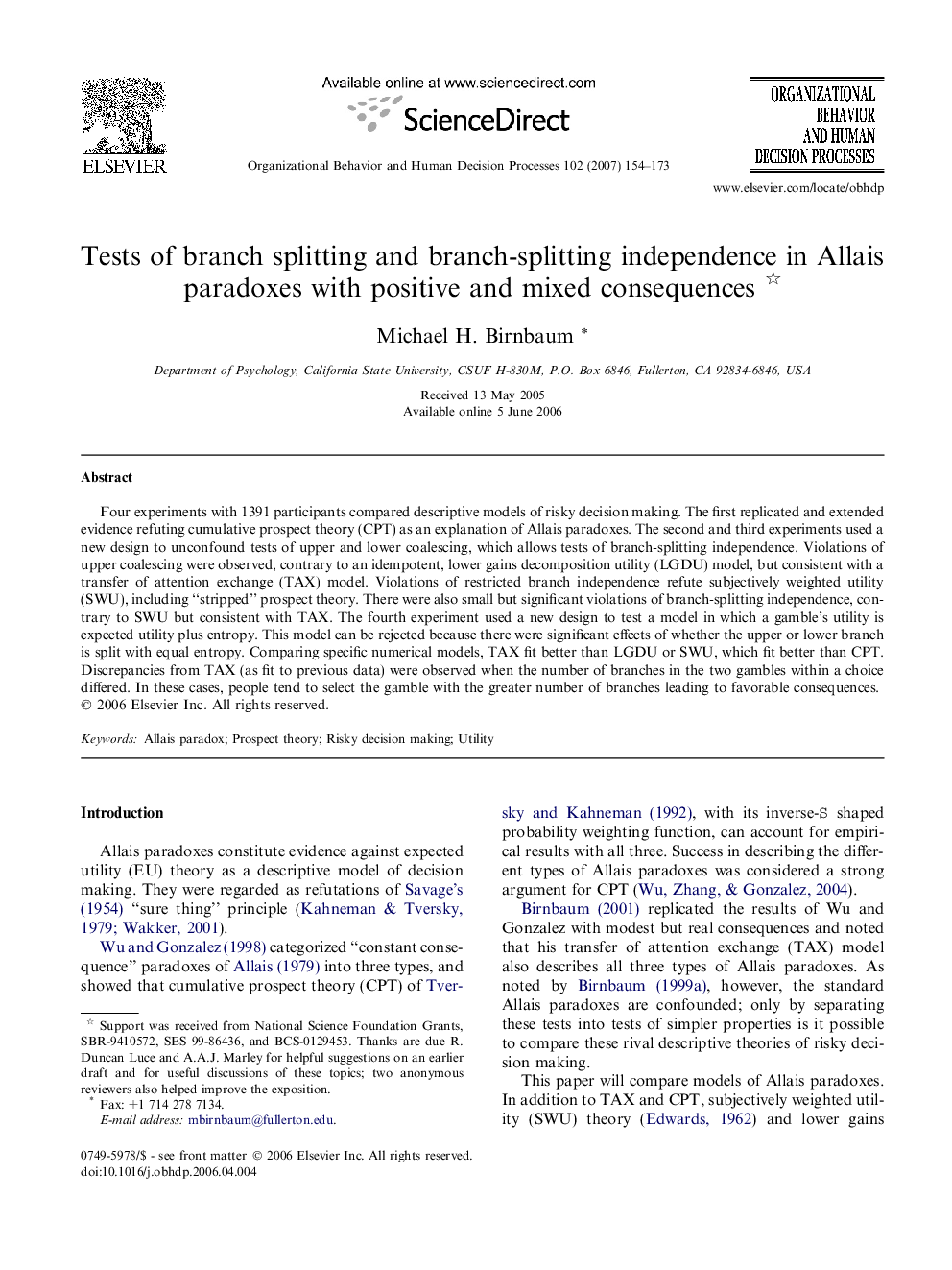| Article ID | Journal | Published Year | Pages | File Type |
|---|---|---|---|---|
| 888995 | Organizational Behavior and Human Decision Processes | 2007 | 20 Pages |
Four experiments with 1391 participants compared descriptive models of risky decision making. The first replicated and extended evidence refuting cumulative prospect theory (CPT) as an explanation of Allais paradoxes. The second and third experiments used a new design to unconfound tests of upper and lower coalescing, which allows tests of branch-splitting independence. Violations of upper coalescing were observed, contrary to an idempotent, lower gains decomposition utility (LGDU) model, but consistent with a transfer of attention exchange (TAX) model. Violations of restricted branch independence refute subjectively weighted utility (SWU), including “stripped” prospect theory. There were also small but significant violations of branch-splitting independence, contrary to SWU but consistent with TAX. The fourth experiment used a new design to test a model in which a gamble’s utility is expected utility plus entropy. This model can be rejected because there were significant effects of whether the upper or lower branch is split with equal entropy. Comparing specific numerical models, TAX fit better than LGDU or SWU, which fit better than CPT. Discrepancies from TAX (as fit to previous data) were observed when the number of branches in the two gambles within a choice differed. In these cases, people tend to select the gamble with the greater number of branches leading to favorable consequences.
